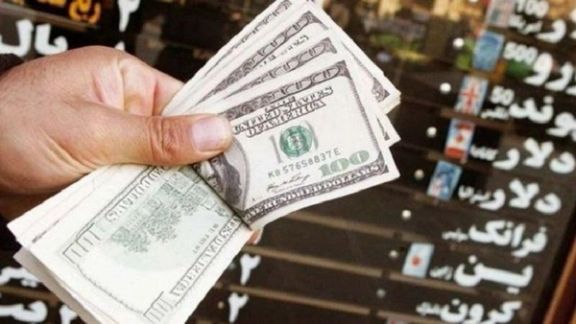Iran's Currency Market In Turmoil Following Attack On Israel

In the wake of heightened geopolitical tensions, the already battered Iranian currency, rial, has been thrust into a whirlwind of volatility.

In the wake of heightened geopolitical tensions, the already battered Iranian currency, rial, has been thrust into a whirlwind of volatility.
Immediately after the Islamic Republic's recent attack on Israel commenced, the foreign exchange market witnessed an unprecedented surge, with the dollar breaching the 700,000 rials mark over the weekend.
The lower rial means more inflationary pressures in Iran, where the annual inflation rate already hovers around 50 percent for the past five years.
Amidst the chaos, state security agents have put heavy pressure on exchange brokers, threatening them with forced closures and arbitrary arrests, according to reports received by Iran International.
Local media and Telegram channels that Iranian people normally use to check open market exchange rates have been prohibited from listing currency rates and market developments.
Tehran Prosecutor's Office accused Jahan-e Sanat newspaper and an un-named economic reporter of having committed a crime "following the publication of materials aimed at the psychological security of the society and disrupting the economic atmosphere of the country after the successful and proud operation of the country's armed forces last night against the Zionist regime…," Mizan News Agency, a media outlet affiliated with the official state judiciary, reported.
Despite these restrictions, some Telegram channels persisted in reporting a downward trajectory in exchange rates, citing a selling rate of approximately 670,400 rials per dollar by Sunday afternoon. The pound, too, mirrored this trend, reaching a zenith of 870,500 rials before retracing to 840,880 rials later in the day.
Eventually, government-affiliated news agencies began acknowledging the market's downward trajectory, attributing it to the aftermath of the April 1 Israeli attack on the Islamic Republic's consular building in Damascus. On Sunday, Iran's semi-official Mehr news agency admitted that the dollar in the open market had reached new highs against the rial in the past few days.
However, discrepancies emerged between government-endorsed rates and those observed in the open market. The Iran Center for Exchange of Currency & Gold (ICE), part of the Central Bank of Iran (CBI), released figures significantly lower than official estimates. ICE announced the price of each dollar bill as 430,567 rials on Sunday, which is at least 250,000 rials lower than the rates announced even by the state news agencies.
The ramifications of the attack on Israel by the Islamic Republic extended beyond conventional markets, permeating into the realm of cryptocurrency. Following the attack announcement, Bitcoin experienced a significant eight percent decline in value, indicative of the broader impact of geopolitical unrest on digital assets.
As tensions persist and market fluctuations continue unabated, the resilience of the Iranian economy faces a stern test amidst the tumultuous geopolitical landscape.
Follow developments on Iran International's Live coverage of ongoing tensions between Iran and Israel.